Demián Revart
April 15th (of 2016) marks the first five years of the uprising of the Pur’hépecha town of Cherán K’eri, located in the state of Michoacán. On that day, during the early morning, a group of women decided to stand up against the system of violence and barbarism perpetrated by municipal authorities, local police, and various illegal logging groups. In addition to exploiting 80% of the 115 square kilometers of the pine, oak and fir forests, the loggers were linked to criminal narco groups, who after beatings, threats and assassinations, have been challenged by community members trying to confront the natural devastation and a climate of insecurity. These brave women blocked various logging trucks from passing on certain streets. The response by the criminals was to repel the group with bullets and beatings. Some inhabitants of the community responded by ringing the bells of “El Calvario” to alert the entire community to take to the street in their defense. With sticks, rocks, machetes, and firecrackers, they chased away the illegal loggers apprehending five of them. Unlike the community members of Cherán, the illegal loggers weren’t beaten nor humiliated, but were treated and fed according to a humanitarian ethic.

After this spontaneous insurrection, the people organized bonfires as spaces of gathering, development and communication at the corners of various streets of the four neighborhoods that make up the municipality. This self-organized process culminated in the unanimous decision to expel the entire representative and political party system, which since 2007 facilitated the entrance of narco-trafficking and illegal loggers, who in turn negotiated with the PRI and PRD.
This model of communal self-government has been witnessed by social movements of the country and the world, strengthening networks of solidarity and spreading tools of resistance to avoid the return of the political parties and organized violence. Among the examples of support have been various investigative documentaries, brigades, spaces of virtual diffusion, and visual art in the streets of Cherán (from murals to sporadic paintings), which today I am gathering in this article.

For 20 years, those in charge of the municipality’s house of culture have carried out cultural, musical and artistic activities. In the house, classes take place of traditional orchestra music, violin, guitar, and painting with different techniques. In the communal and religious festivals, it is common that the folkloric music speaks to everyday life. For example, it speaks to the “Festivals of Resurrection” where through community dance, the elder Council of Communal Government celebrate the New Cherán which is being built amongst smiles and music.
To make visible the talent of the youth of Cherán, a massive forum of expression “Ex-Joven” was organized the 28-30 of December 2015, by the youth council and the house of culture, in which they painted more than 35 murals by local artists and those from other cities. The conceptual content of this artistic project resides in the original phrase “Xarhatakuarhikuarhu”, that in English means “I am here, I am present”, referring always to the community values that from the pur’hépecha philosophy challnge the false dichotomy between the individual and the collective.
Without further ado, I share some of the works of art that give life to the fresh community air that is being breathed in Cherán K’eri.
* In 2012, children of the municipality painted various mural-histories in which they narrated their feelings of the new Cherán. The murals are found in the streets of the four neighborhoods, the House of Communal Government, and in the House of Communal Property. Most of the murals were produced by the artists Marco Hugo Guardián Lemus and Luis Giovanni Fabián Guerrero.






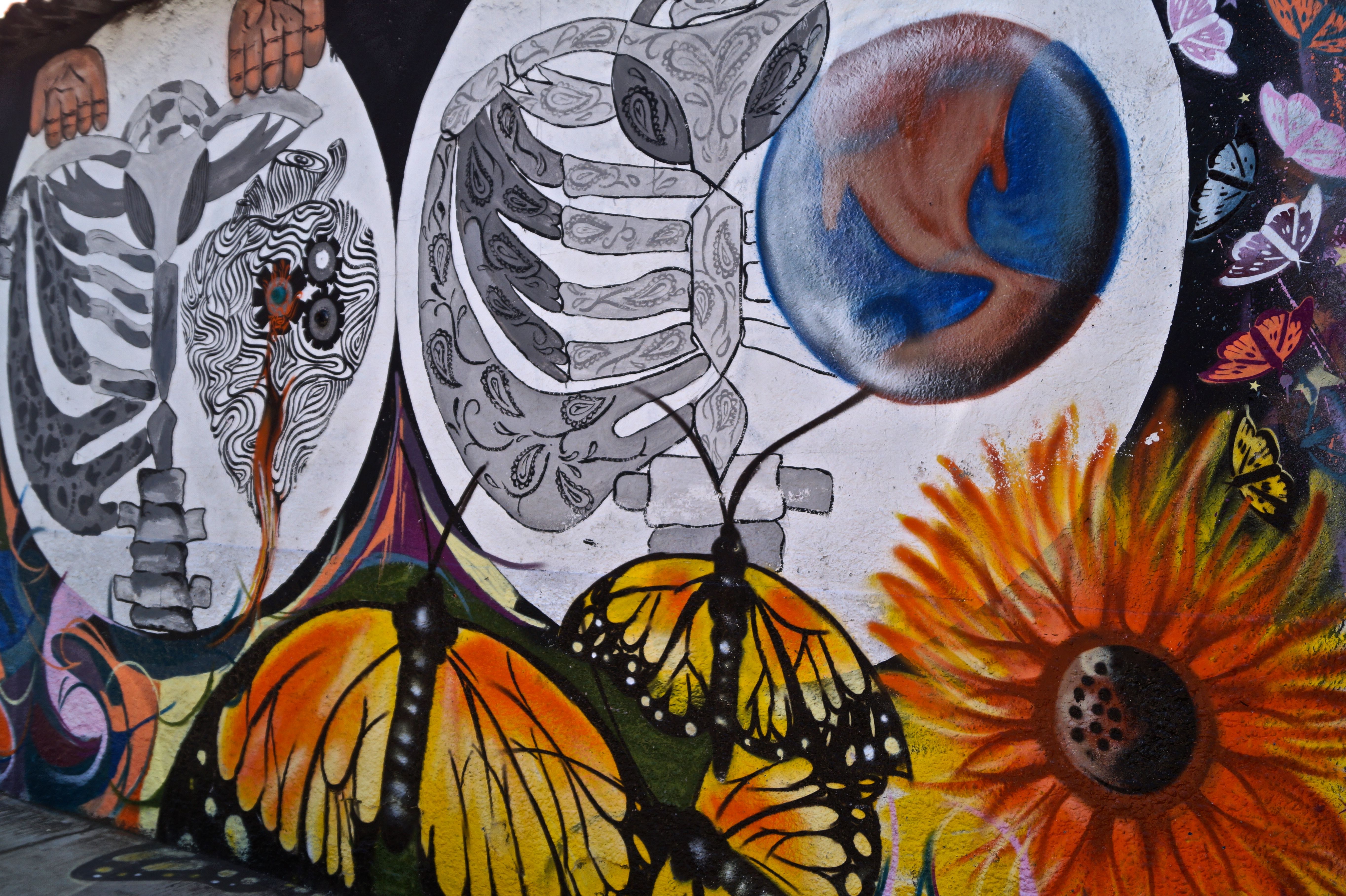





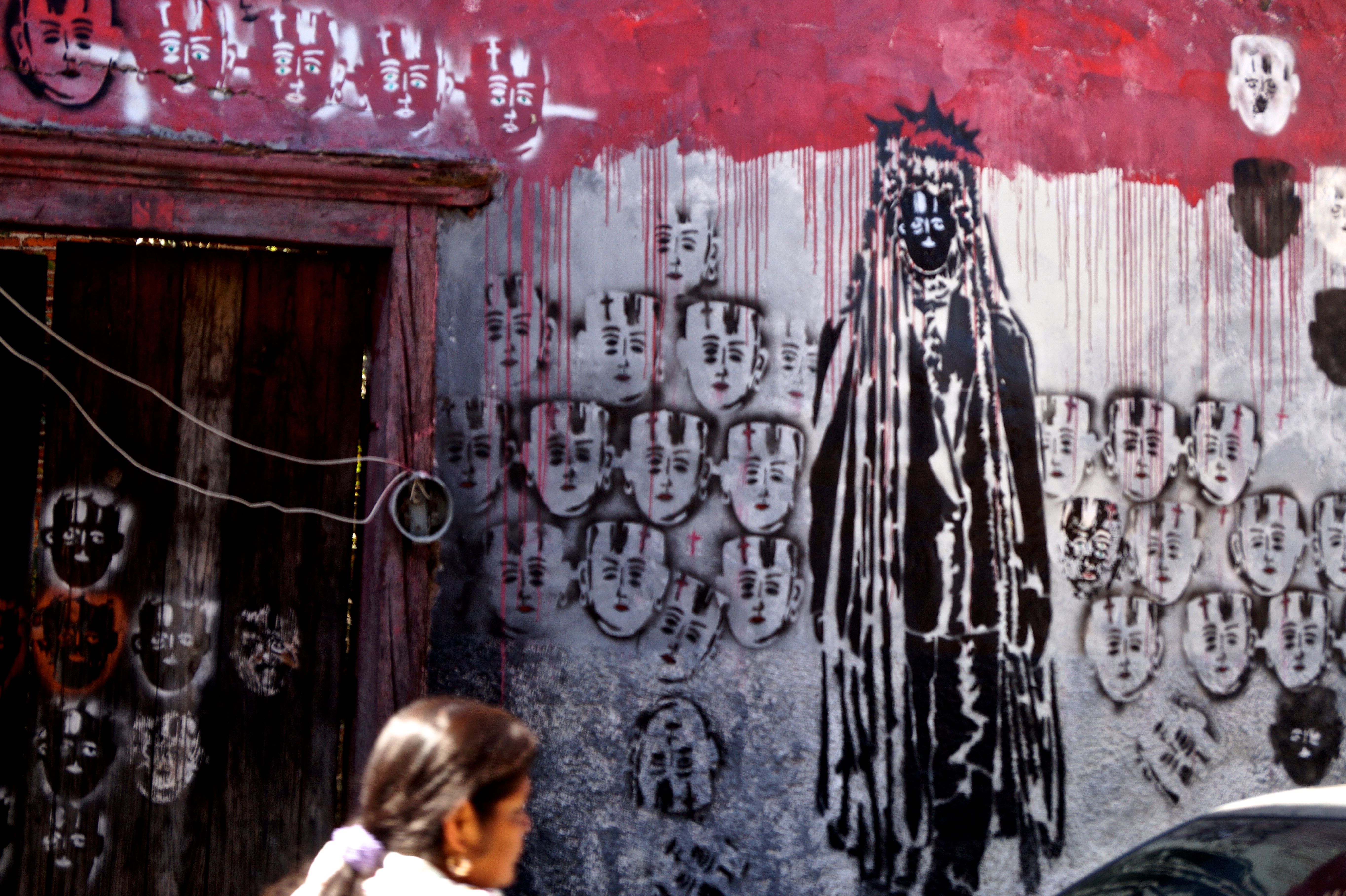







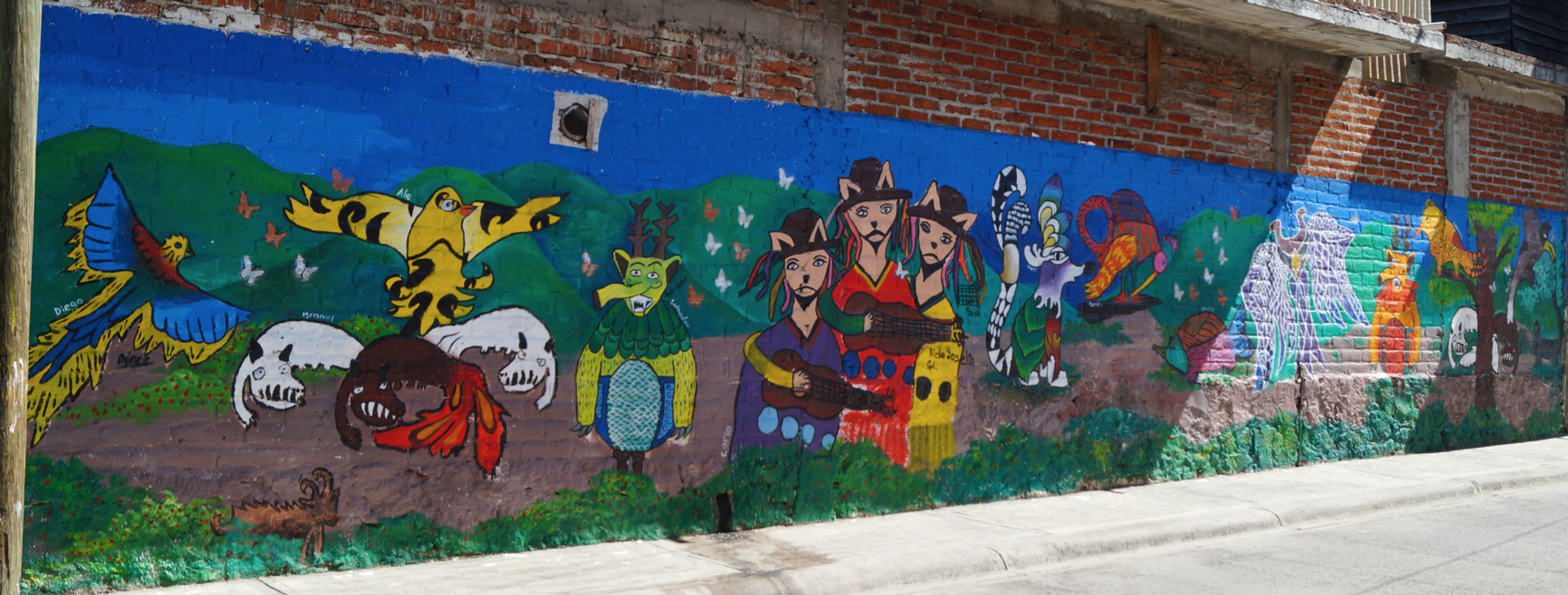
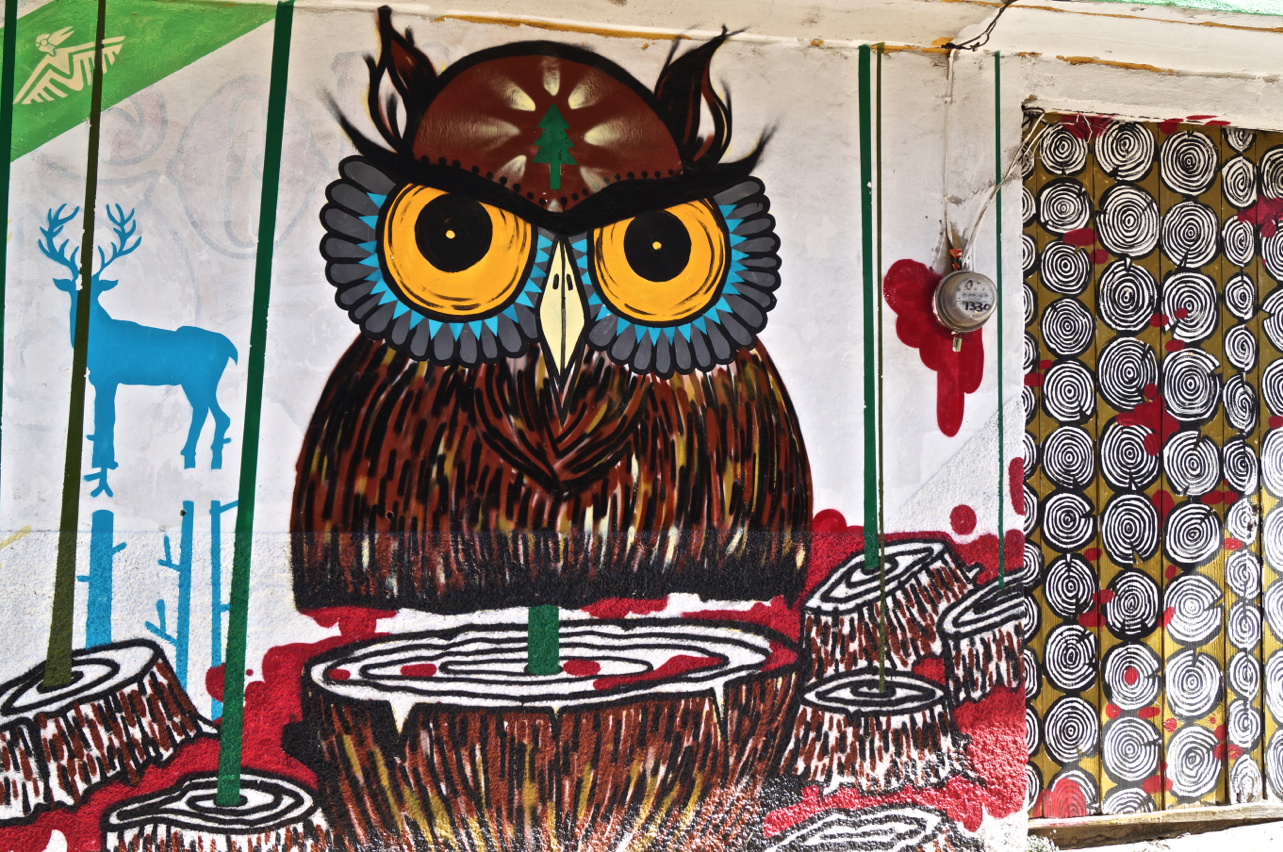

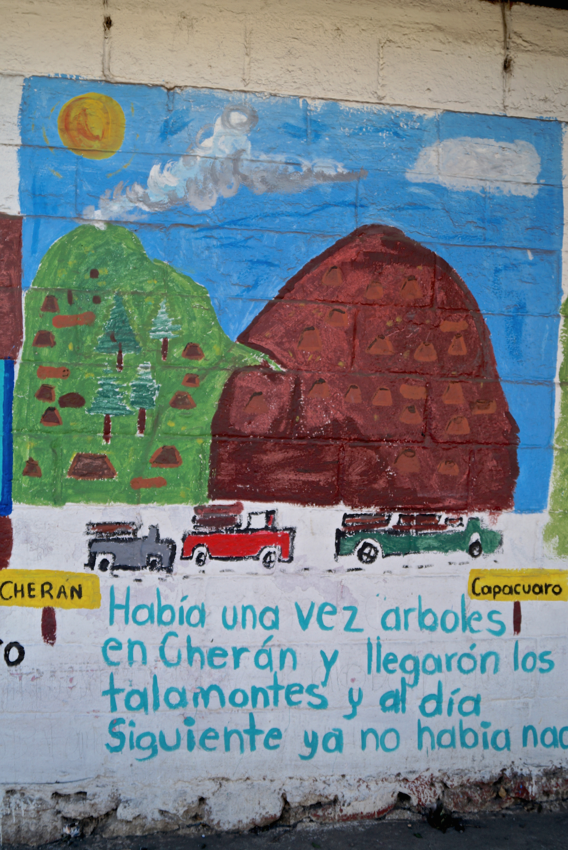
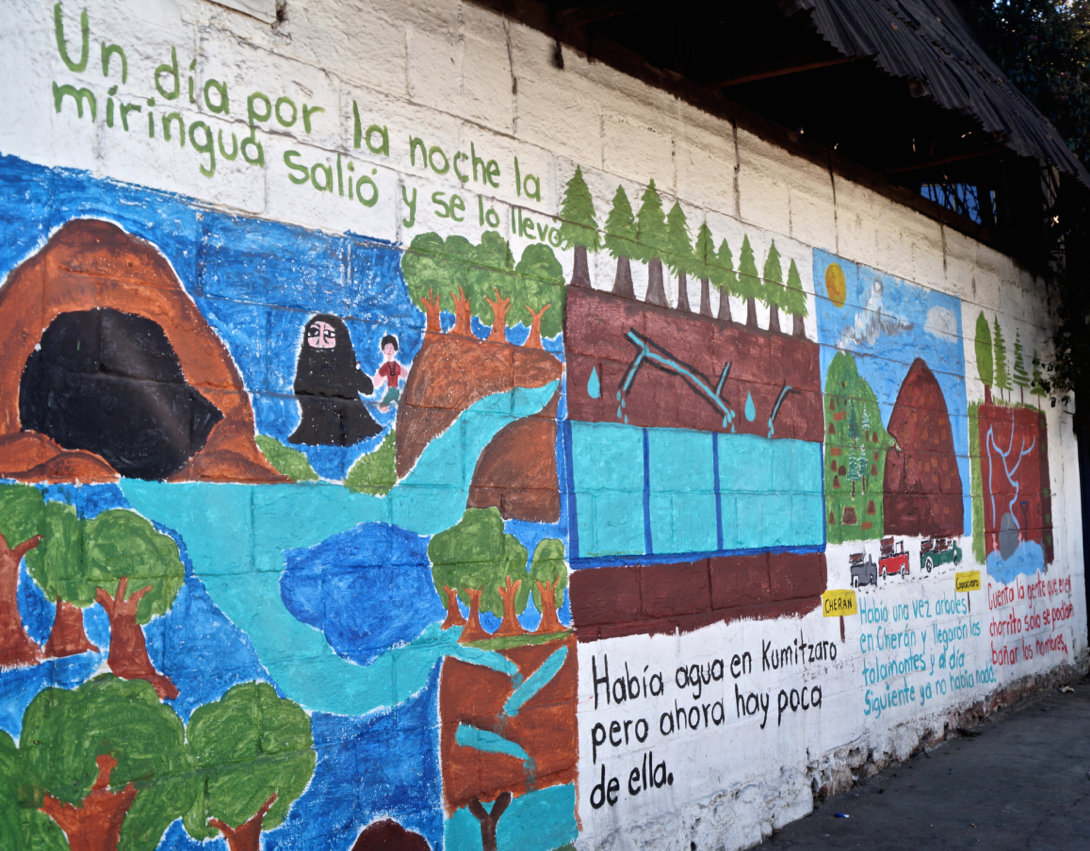
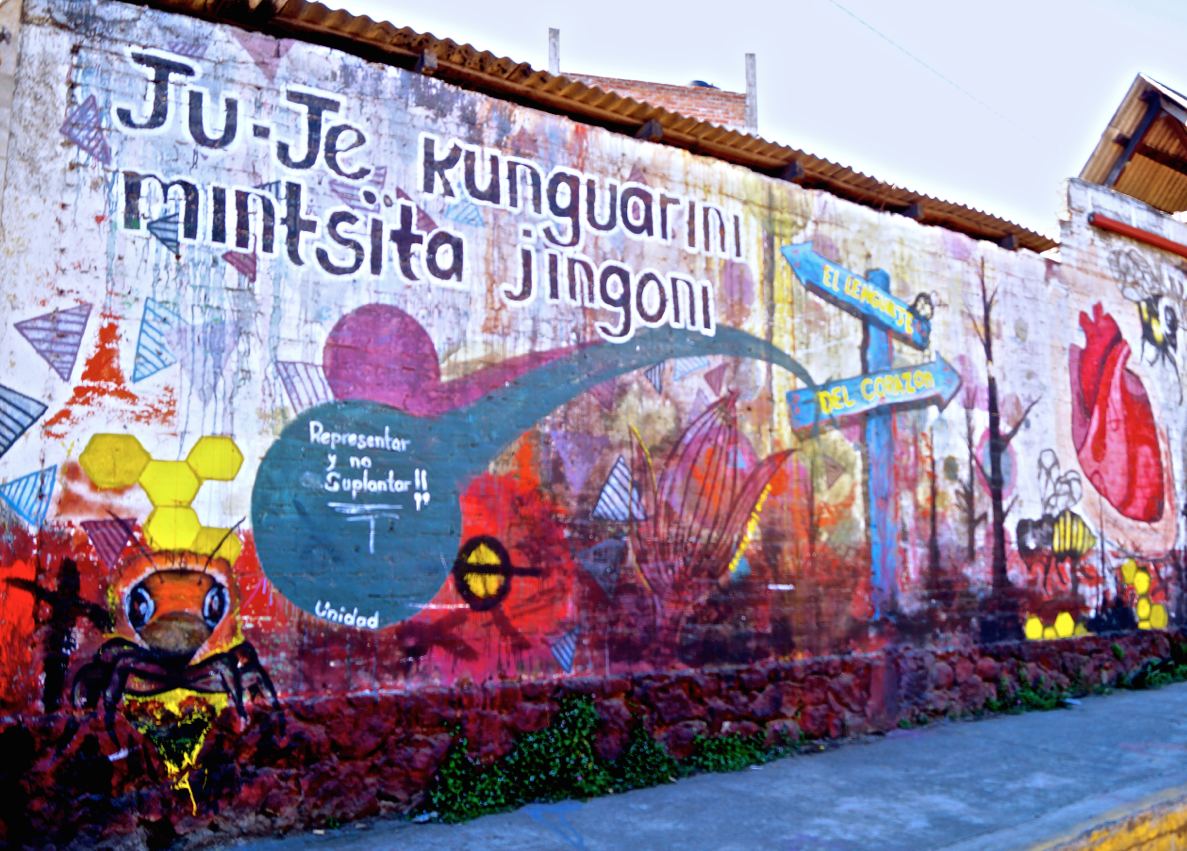
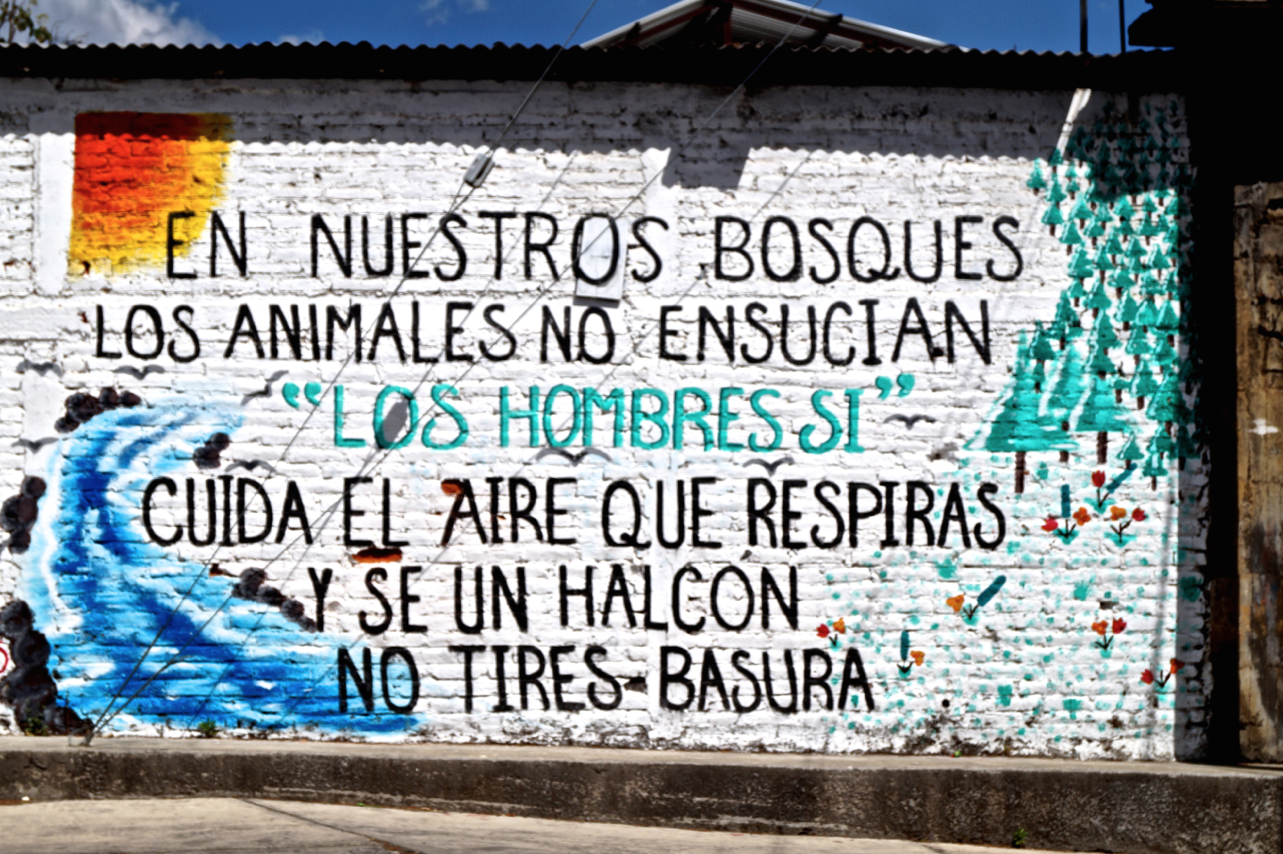
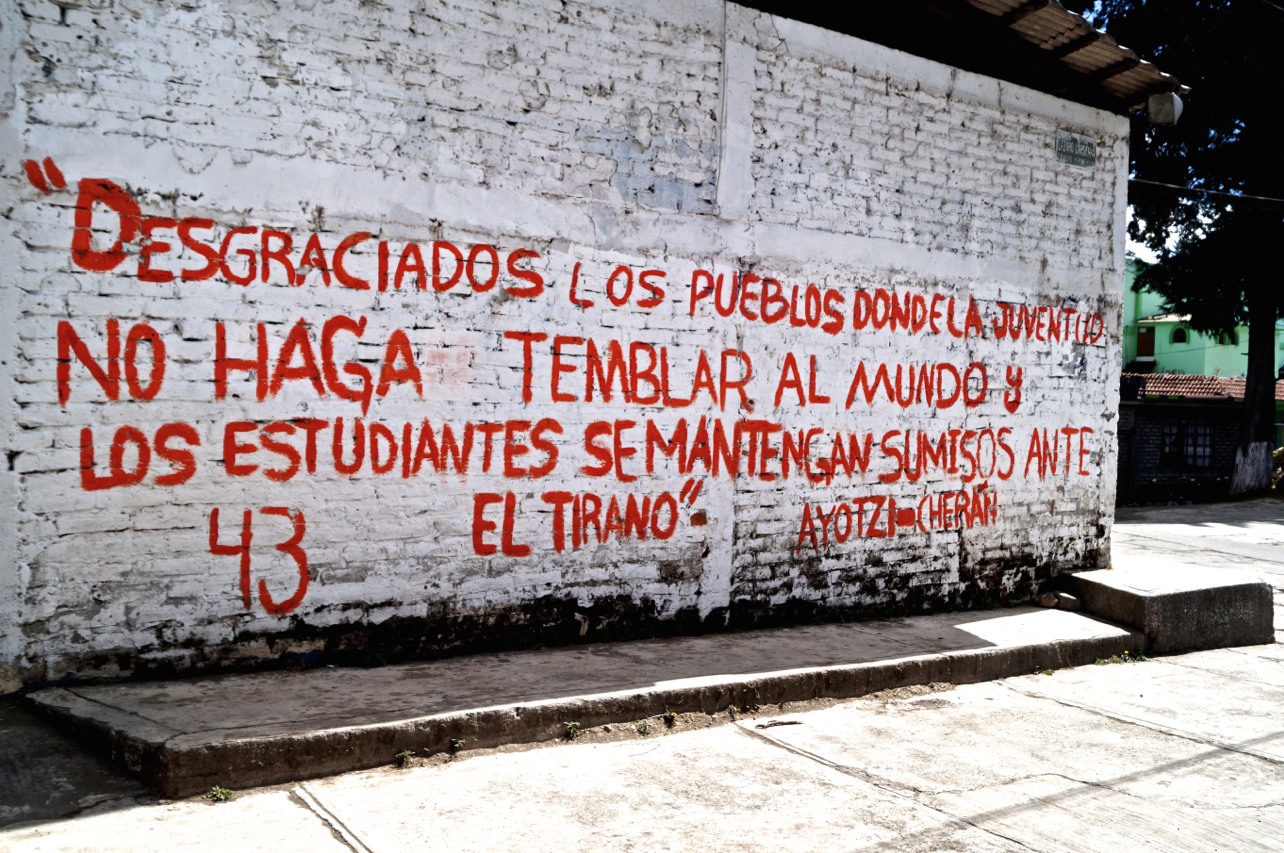
Published in spanish in:
Cherán K’eri a través de sus murales y música como herramientas de resistencia
1,139 total views, 1 views today
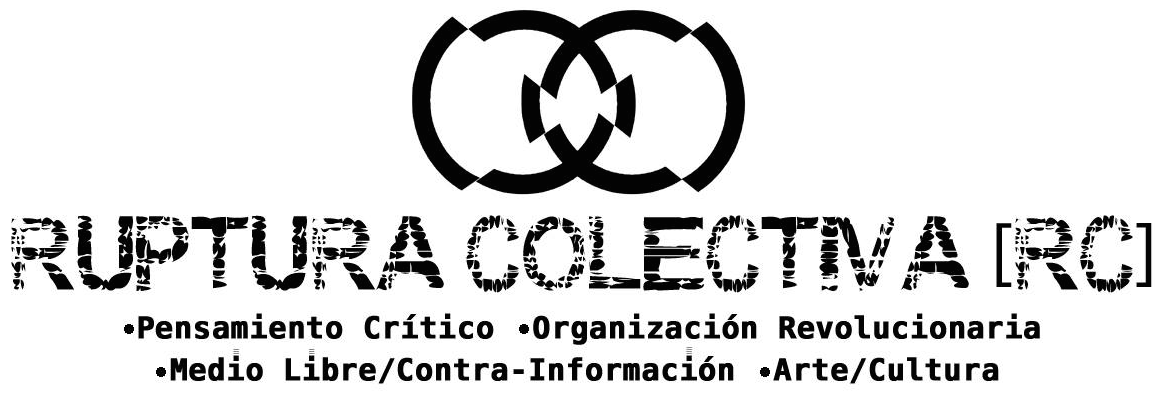
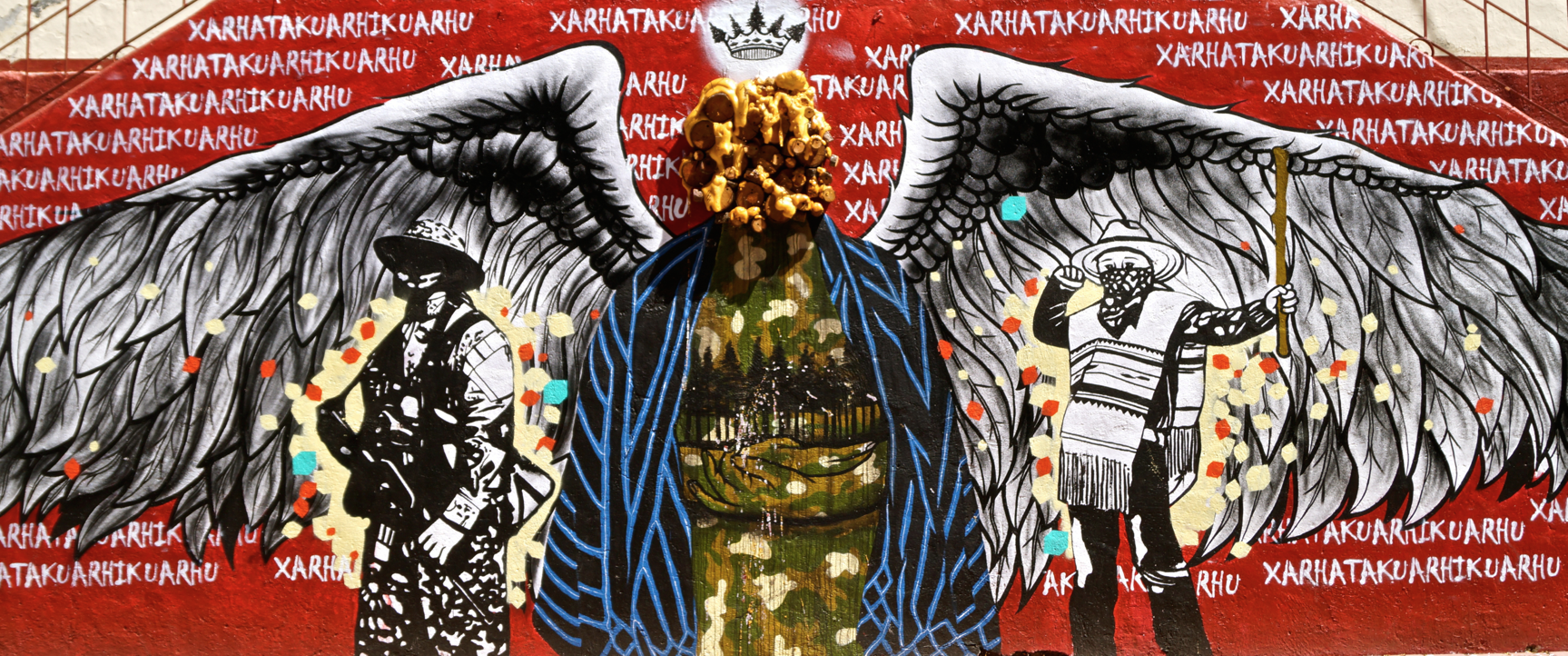
One thought on “Cherán K’eri through music and murals as tools of resistance”